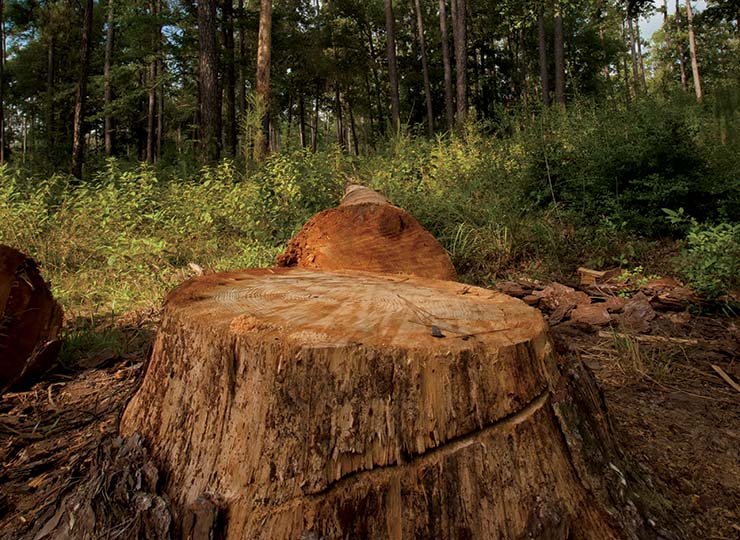Home > Texas > Texas Crops & Livestock > Texas Forestry Industry is Standing Solid
Texas Forestry Industry is Standing Solid
In partnership with: Texas Department of Agriculture

When it comes to the forestry industry in Texas, there are two types of impacts that draw the attention of officials and observers.
First, there’s the impact on the economy, which includes large, impressive numbers like $23.7 billion in economic impact and 117,000 forestry jobs throughout the state.
Then there’s the impact where less is considered more. That’s the goal of those in the industry concerned about the environment – where the lesser effect on water, soil and other elements of the ecosystem, the better.
Through the use of forestry best management practices (BMPs), the state’s timber industry is able to demonstrate high productivity at a low cost to natural resources. BMPs are methods such as leaving a buffer zone of trees next to a stream, installing a culvert to cross a waterway or establishing grass on forest roads to prevent erosion.
“Best management practices are scientific principles that have been validated through research to be proven effective for protecting soil and water resources when applied correctly,” says Hughes Simpson, program coordinator for the Texas A&M Forest Service’s Water Resources and Ecosystem Services division. “We can continue to manage our forest resources sustainably when we use these practices.”
Critical Training
The Texas A&M Forest Service, which is part of the Texas A&M University System, has been managing all aspects of the state’s forestry industry since 1915. The forest service owns five relatively small forests for research and demonstrations, and its employees work closely with the Texas Forestry Association, a nonprofit trade association with more than 3,000 members. The two organizations work together to ensure the sustainability of Texas’ commercial forests, most of which are located in the eastern part of the state.
“If you look at East Texas from a perspective of how much wood or fiber we are growing versus how much we are harvesting, we are growing more than we harvest,” says Burl Carraway, department head of Texas A&M Forest Service’s Sustainable Forestry. “The ratio is now about 1.1-1.2 to 1.”
The state’s forestry industry has been using BMPs for more than two decades. The practices are non-regulatory in Texas, but are strongly encouraged.
“A large portion of the mills do require their contractors or suppliers to be trained in these practices,” Simpson says. “Basically it has kind of evolved into a marketing mechanism to where if you’re not trained or certified through this program, then you have limited markets for your products.”
Working with the Texas Forestry Association, Simpson and his staff train loggers and others in the industry through four main courses: maintaining safe operations; wildlife and endangered species; wetlands, natural forest ecosystems and the wildlife that inhabit them; and business management and communications. Once certified, participants must complete an additional six hours of training each year.
Despite suffering a considerable setback from the 2011 summer drought, extremely high temperatures and the state’s worst wildfire season, the forestry industry remains an integral part of Texas agriculture.

Major Economic Driver
Timber is seventh among all agriculture commodities in the state. Texas forests produce lumber, structural panels, paper and treated-wood products, and primary mill and logging residue.
“That’s fairly significant considering almost all timber activity is in East Texas,” Carraway says. “In 25 of the 43 East Texas counties, the forest sector is either the No. 1 or No. 2 top manufacturing employer. It’s a big contributor to East Texas certainly, but also statewide.”
Of the 12 million acres of forestland in East Texas, about two-thirds are owned by individuals or families, and another 25 percent by private investors. Eight percent is publicly-owned, with most being national forests.



